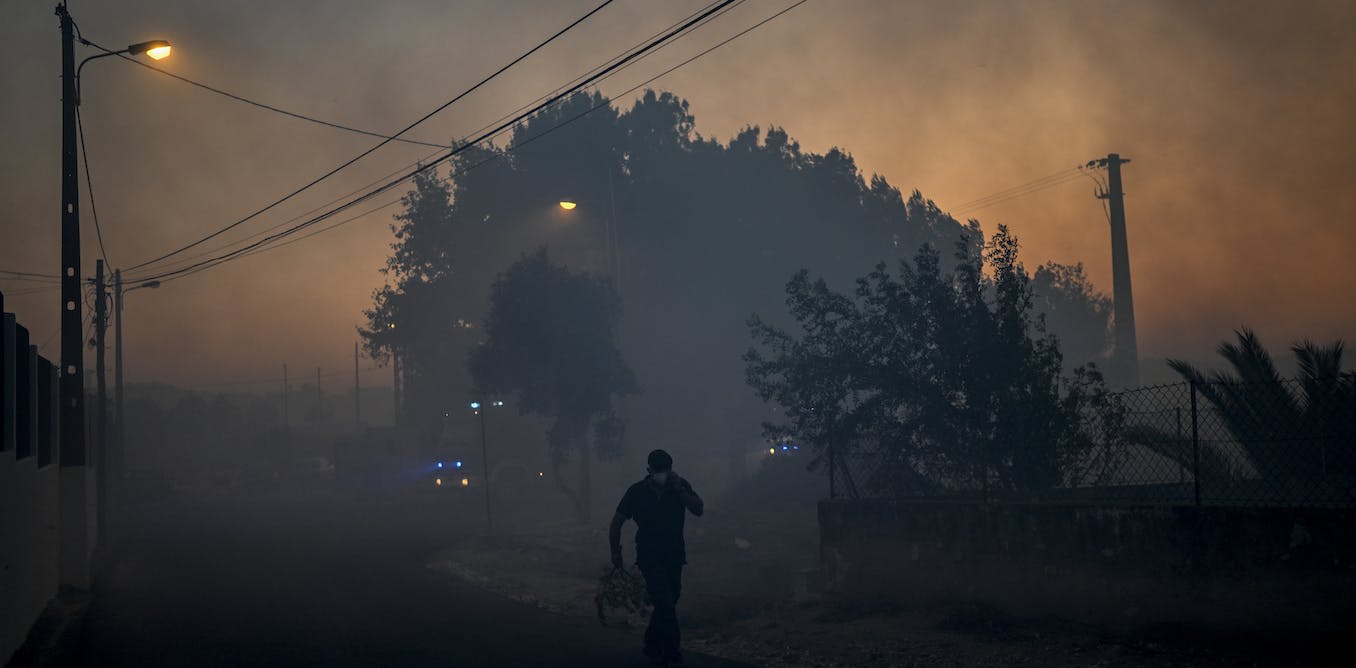A little over three years ago, a group of Portuguese youths filed a legal action against 32 European governments to the European Court of Human Rights (ECHR) over what they say is a failure to adequately tackle global heating. Now, the Strasbourg court will be hearing them on 27 September, in a novel, far-fetching bid to arm-twist them into taking climate action.
The case represents the first time that a climate lawsuit is held at the ECHR. It is also momentous through the sheer number of governments on trial and its plaintiffs’ youthful age, now ranging from 11 to 24. Among the accused are the EU’s 27 member states as well as the UK, Switzerland, Norway, Russia, Turkey and Ukraine.
The claim
Plaintiffs expressed their grave concern over governments’ insufficient efforts to limit global warming to 2°C above pre-industrial levels. Were the rest of the world to mirror their commitments, the global temperature would hike by 2 to 3C, according to Climate Tracker.
The youths argue that their way of life and health are threatened by the climate crisis’ impacts, including Portugal’s annual heat waves and wildfires which inspired them to crowd-fund the legal action in October 2017.
Human rights to the rescue of climate justice
Against a global backdrop of increasing climate litigation, the Duarte Agostinho application follows in the steps of other climate lawsuits to draw a clear link between human rights violations and climate change. The first to have blazed that trail was the Urgenda Foundation in 2015, whose legal action compelled the government to cut emissions by 25% from 1990 levels on the grounds of its applicants’ human rights.
With an eye to the latter, the group of Portuguese allege global heating has already taken a toll on their health and puts them at risk of suffering more significant health problems in future. They also claim to suffer from anxiety after wildfires in Portugal in 2017 killed more than 120 people.
Governments, they argue, have failed to comply with their positive obligations under Articles 2 of the European Convention on Human Rights (Right to life):
“Everyone’s right to life shall be protected by law. No one shall be deprived of his life intentionally save in the execution of a sentence of a court following his conviction of a crime for which this penalty is provided by law.”
… and Article 8 (Right to respect to privacy and family life):
“1. Everyone has the right to respect for his private and family
life, his home and his correspondence.
2. There shall be no interference by a public authority with the
exercise of this right except such as is in accordance with the
law and is necessary in a democratic society in the interests of
national security, public safety or the economic well-being of the
country, for the prevention of disorder or crime, for the protection
of health or morals, or for the protection of the rights and freedoms
of others.”
The latter is often used by the Court in other environmental cases to extend the scope of its protection to the victim’s home and habitat, as well as to their surroundings. In the absence of a specific article on environmental protection, these articles are essential tools for protecting people against various forms of pollution and other nuisances.
In failing to take bold climate action, youths also argue governments have breached Article 14, which guarantees the right not to suffer discrimination in the “enjoyment of the rights and freedoms set forth in this Convention,” with the view that climate change impacts their generation in particular.
Ushering in effective action
Lawyers representing the youth will be seeking to avoid a repeat of some of the Urgenda case’s failures. Although a landmark case, the Dutch Supreme Court had ruled at the time that the Dutch state would have to carry out the “absolute minimum” of its fair share of emission reductions.
To prevent this from happening again, young people will be banking on a range of principles from human rights, including that of effectiveness. According to this postulate, states cannot remain passive in the face of a violation of the rights of individuals. For the Court, this principle originally offered a guarantee that states would implement the positive obligations of protection required by the Convention.
Should this interpretation prevail in the Duarte case, the Court’s decision would oblige each of the 32 States to demonstrate that they had done everything in their power not to violate the applicants’ human rights.
The Court could also choose to interpret “effectiveness” as the “efficiency” of the measures put in place by governments to protect their citizens. In the Duarte case, this could mean that the Court checks not only that States have legislation capable of protecting individuals’ rights, but that the laws in question weigh up against the climate crisis. This reading could precipitate a favourable outcome for claimants, requiring the States to show what specific measures they have taken to address climate change. The decision could serve as a model and exert a certain – moderate – influence on national decisions or on national human rights bodies (National Human Rights Commissions).
However, the Court could also content itself with gauging effectiveness, which would consist in verifying that the States have the legislative tools to deal with climate change, without delving into the details of each national law. Such an approach would leave the States their own ‘margin’ of appreciation so that they monitor their legal systems themselves.
Lawyers could also push for an interpretation of the Convention based on the precautionary principle.
The latter orders parties to take action to prevent a provision from being violated, even in a context of uncertainty. In the Duarte case, the political authorities as well as the administrations, will have to identify, evaluate and take into consideration certain climate risks quoted by the young applicants.
The European Court’s climate challenge
The case will undoubtedly constitute what lawyers refer to as a ‘hard case’ – where judges need to balance equities and law – and will play an important role in other future climate applications.
The ECHR takes on average two years to reach a decision, though this period may vary depending on the complexity of the case. The question of the verdict’s impact on the continent’s climate justice also remains to be seen. It will not, for example, have the power to annul or modify decisions taken by national courts. However, it could sharpen States’ obligations in climate matters and respect for human rights. For instance, France has in the past been constrained to change its laws on phone-tapping and police custody conditions following rulings by the ECHR.
Ultimately, the ECHR’s verdict will inform whether it is fit to hold states to account over their obligation to protect against a global threat. As the century progresses, the Court will inevitably have to evolve and give a ‘greener’ interpretation of the Convention. Its ability to protect fundamental rights in a world on the verge of exhaustion depends on it.




